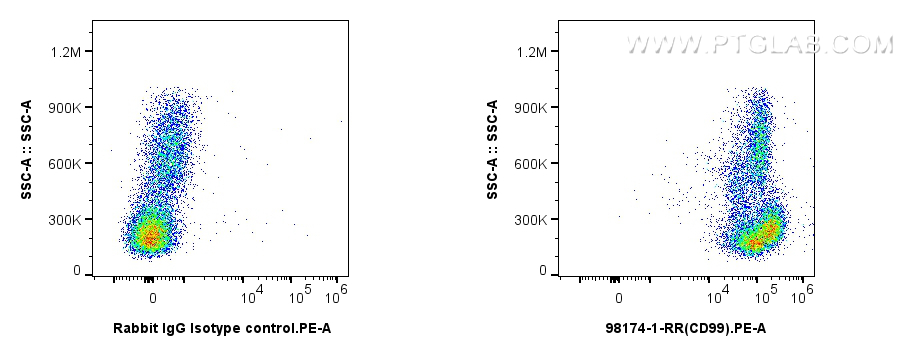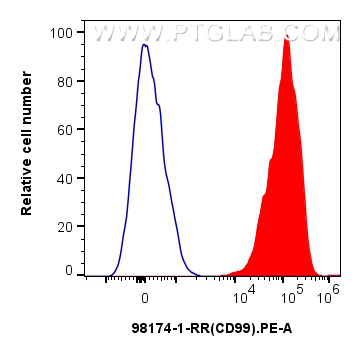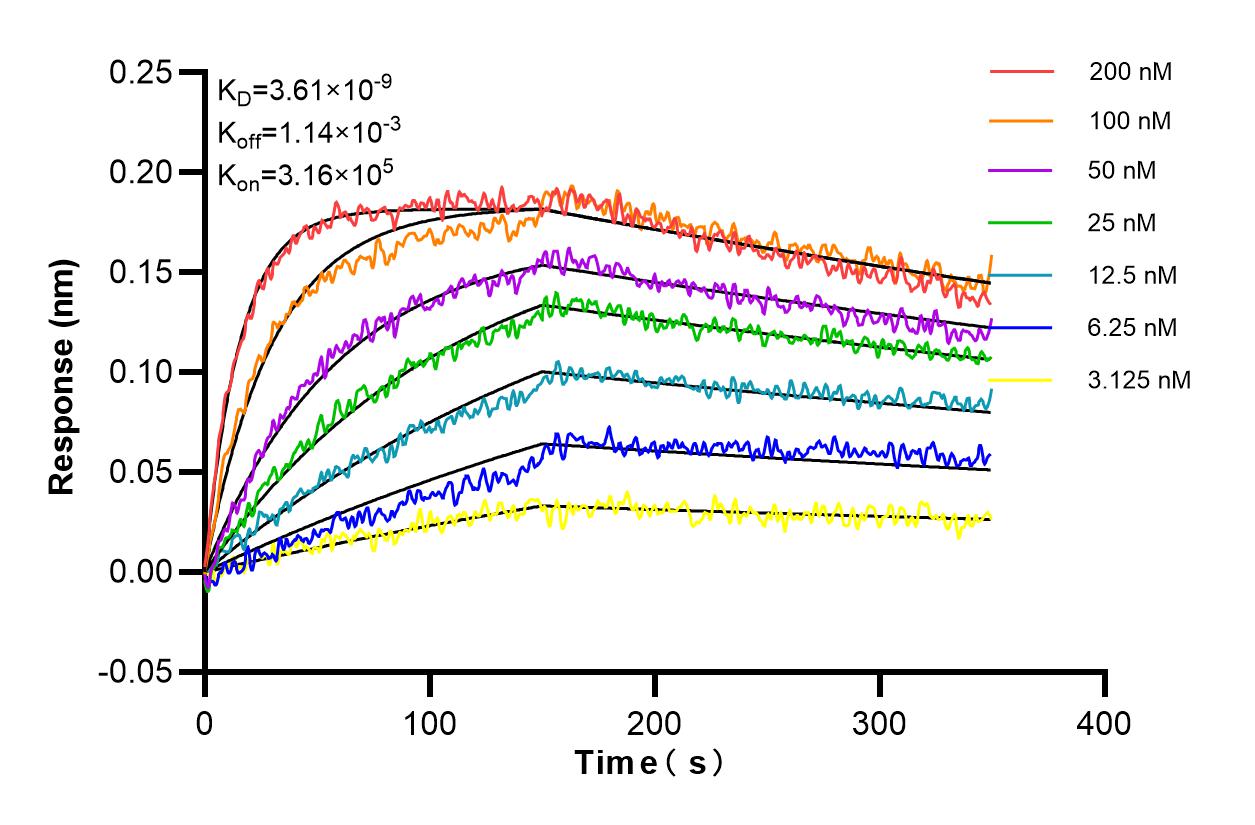验证数据展示
经过测试的应用
| Positive FC detected in | human PBMCs |
推荐稀释比
| 应用 | 推荐稀释比 |
|---|---|
| This reagent has been tested for flow cytometric analysis. It is recommended that this reagent should be titrated in each testing system to obtain optimal results. | |
| Sample-dependent, Check data in validation data gallery. | |
产品信息
98174-1-RR targets CD99 in FC applications and shows reactivity with human samples.
| 经测试应用 | FC Application Description |
| 经测试反应性 | human |
| 免疫原 | Recombinant Protein 种属同源性预测 |
| 宿主/亚型 | Rabbit / IgG |
| 抗体类别 | Recombinant |
| 产品类型 | Antibody |
| 全称 | CD99 molecule |
| 别名 | MIC2, E2 antigen, CD99 molecule, CD99 antigen, 241737H1 |
| 计算分子量 | 19 kDa, 16 kDa, 17 kDa |
| GenBank蛋白编号 | BC021620 |
| 基因名称 | CD99 |
| Gene ID (NCBI) | 4267 |
| RRID | AB_3672317 |
| 偶联类型 | Unconjugated |
| 形式 | Liquid |
| 纯化方式 | Protein A purfication |
| UNIPROT ID | P14209 |
| 储存缓冲液 | PBS with 0.09% sodium azide , pH 7.3 |
| 储存条件 | Store at 2 - 8°C. Stable for one year after shipment. |
背景介绍
CD99, also known as MIC2, is a heavily O-glycosylated transmembrane protein involved in T-cell adhesion processes and in spontaneous rosette formation with erythrocytes. CD99 is broadly distributed on many cell types, with particularly strong expression on human cortical thymocytes, Ewing's sarcoma cells and peripheral primitive neuroectodermal tumors (PMID: 9794396; 16984917). In normal cells, CD99 has been functionally implicated in cell adhesion, migration, apoptosis, differentiation, activation, and proliferation of lymphocytes and monocyte extravasation and transport of several transmembrane proteins (PMID: 16984917).
实验方案
| Product Specific Protocols | |
|---|---|
| FC protocol for CD99 antibody 98174-1-RR | Download protocol |
| Standard Protocols | |
|---|---|
| Click here to view our Standard Protocols |


